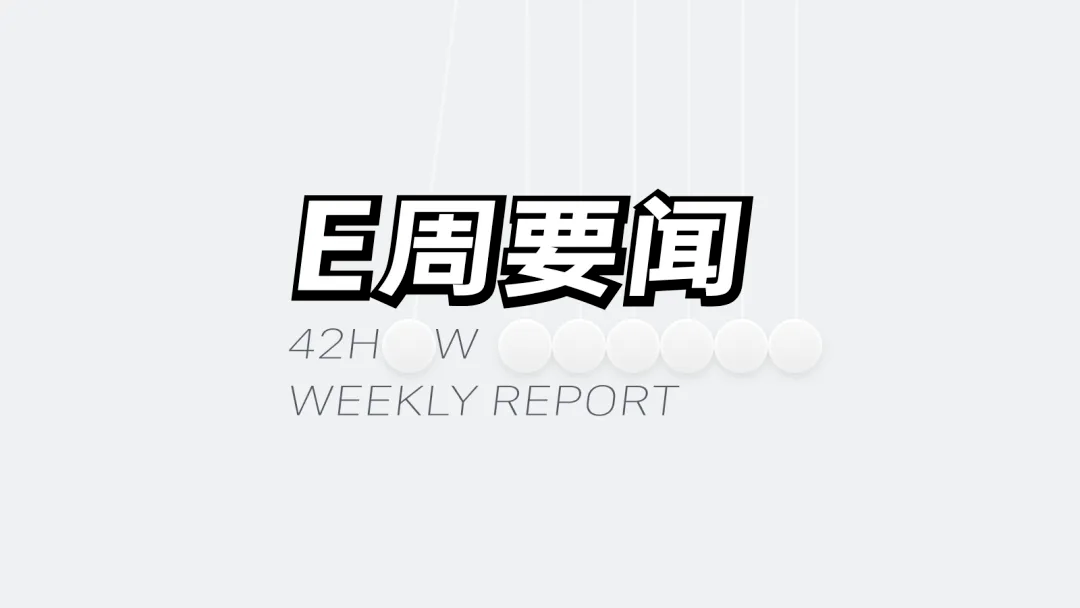Weekly Index




Weekly News
Launch of XiaoMi SU7 Ultra Prototype
On the night of July 19th, Lei Jun held his fifth annual speech. Starting with U.S. sanctions, Lei Jun shared the story of XiaoMi’s car manufacturing journey over the past three years.
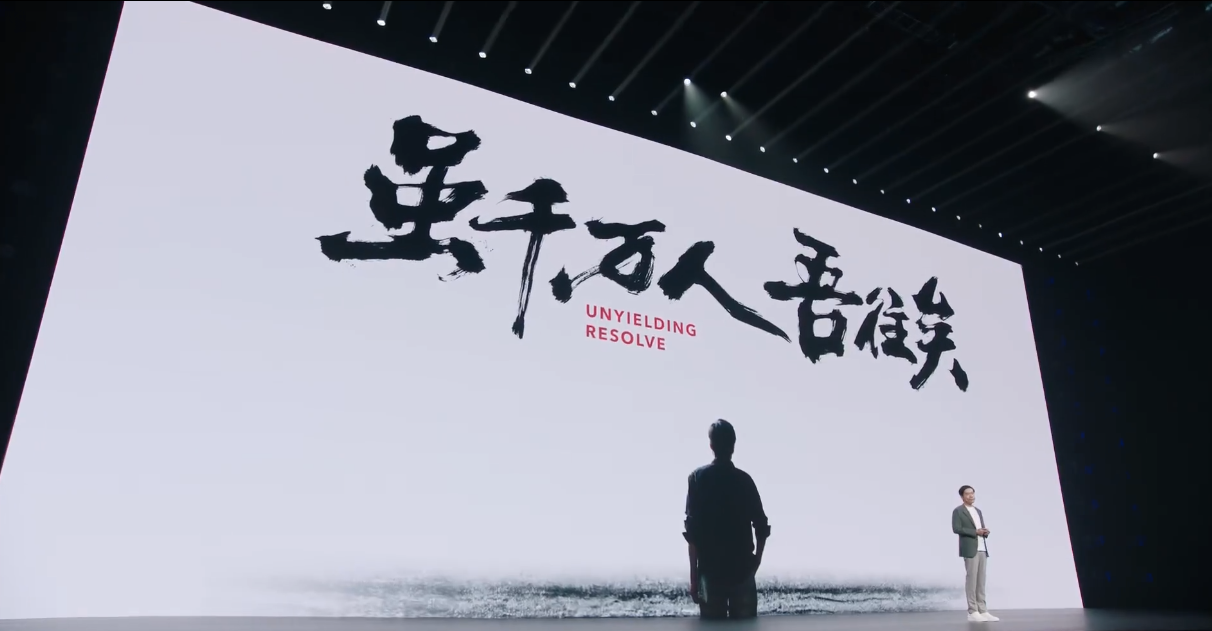
At seven o’clock in the morning on January 15, 2021, Lei Jun received a phone call, “Mr. Lei, you have been sanctioned by America.”
As it turns out, in January 2021, Trump in the final stages of his term, issued an executive order listing XiaoMi along with 43 other Chinese companies on the “blacklist,” the list of “Chinese military companies.” Any Chinese enterprise listed here would be restricted from purchasing American goods, software, technology and other services.
This “neck-carding” from the U.S led to a significant drop in XiaoMi’s share price and made the operation of their core business, cell phones, filled with uncertainties.On that day, XiaoMi held a board meeting to discuss how to respond to US sanctions. Lei Jun, the founder of Xiaomi, once expressed his deep concern over a question from a board member: “If Xiaomi’s mobile phones falter, what will happen to its thirty to forty thousand employees?” This prompted another board member to suggest entering the automotive industry.
In 2021, Tesla was gaining ground in China, and the rise of new car manufacturers was evident. Companies were emerging with new innovations based on smart and electric technologies, making the new energy vehicle market a hotly contested field.
For XiaoMi at that time, besides the sanctions issue, there was another problem that was causing them discomfort – the upscale branding. Due to the engrained impression of XiaoMi as cost-effective, the company struggled to establish a high-end image. Lei Jun was deeply anxious about this. He once mentioned that a company would inevitably become mediocre or even decline if it could not continually improve its capabilities based on high-end market performance. The automotive industry served as a potential avenue to enhance XiaoMi’s brand value.
Therefore, when the suggestion of auto-manufacturing was proposed, Lei Jun was indeed moved and subsequently encouraged research into the new energy vehicle market.
After extensive research, Lei Jun discovered that the automotive and consumer electronics industries were increasingly merging, a trend that made electric smart cars irresistible. Meanwhile, he also noted that the new energy vehicle market was crowded and likely to undergo a process similar to what happened in the mobile phone industry where few companies survived. Lei Jun felt that if Xiaomi’s car business cannot rank among the top five, it may not survive.
Finally, after 70 days of research involving 85 interviews and more than 200 people, XiaoMi, under Lei Jun’s leadership, decided to enter the automotive business, with a substantial investment of $10 billion.
On March 30, 2021, Lei Jun officially replied to the Xiaomi board, indicating he was ready to take charge of this project if deemed the most suitable. On the same day, Lei Jun held a significant press conference announcing the company’s automotive ambitions, uttering the passionate slogan, “The last venture, fight for Xiaomi Auto.”
XiaoMi’s decision to build cars was driven by discomfort, but once the choice was made, it seemed to march down this path with unrivaled vigor and bravery. After all, after the press conference on March 30, Lei Jun had in effect burned his bridges.
Lei Jun’s personal influence cannot be underestimated when identifying the advantages of Xiaomi’s car production.
At 5 am on March 31, 2021, Lei Jun received a message from Liu Anyu, the 37th employee of XiaoMi, expressing his willingness to do anything to participate in car manufacturing. Liu’s decision to join Xiaomi’s car production was quite simple. On one hand, he was a true car enthusiast, and on the other, he was moved by Lei Jun’s impassioned press conference the night before.In fact, not only did Lei Jun move Liu Anyu at that press conference, he also convinced Li Tianyuan, a BMW designer, to pull up stakes and return from Europe to work in China for XiaoMi. Furthermore, he attracted Hu Zhengnan, a partner at Shunwei Capital and former dean of the Geely Research Institute, to join XiaoMi and participate in automobile manufacturing.
According to Lei Jun, that press conference attracted a lot of people to join XiaoMi Auto. Furthermore, Lei Jun added that over the three years that XiaoMi has been manufacturing cars, they have received over 380,000 resumes.
Interestingly, not only were many individuals eager to join the team at XiaoMi Auto, but much funding too. Lei Jun stated that if XiaoMi Auto chooses to operate independently of the XiaoMi system, it could be valued at 10 billion USD by the capital market.
However, Lei Jun was not swayed by the money. In his view, car making is a long-term process, and if he accepted other people’s money, it would be tough to retain his original intentions.
Therefore, Lei Jun ultimately decided to follow his own path by building cars through the entire XiaoMi system, rather than adopting an asset-light OEM operation model. Starting with core technologies, they began their journey in car manufacturing step by step.
In the early stages of R&D, although the Chinese automotive industry chain was relatively mature, XiaoMi Auto was still making its first car. After just over ten months, more than ten battery packs had been made, costing tens of millions.
At the first review meeting of XiaoMi Auto before the Chinese New Year in 2022, intense debates broke out within the XiaoMi Auto team. Sometimes a single question could spark an argument lasting from 9 in the morning till 9 in the evening.
Faced with the standoff, Lei Jun decided to let the meetings continue until all disagreements were resolved.
Eventually, this review lasted 21 days, and all proposals had to be scrapped and reworked. From the pictures revealed by Lei Jun you can see that the early XiaoMi SU7 design and the current one are worlds apart.
In addition, after 21 days of debate, the XiaoMi Auto team reached a crucial consensus at this review meeting — XiaoMi’s greatest victory is just getting its license to manufacture cars.
Therefore, concerning car manufacturing, the company set a “follow the path to create the unique” principle rather than disrupting or flipping the table right from the start.
During the process of manufacturing cars, Lei Jun also made a big personal change. After deciding to manufacture cars, he set himself a small target: to be one of the best driving executives in Chinese automotive enterprises.
To achieve this, he began driving on his own. Lei Jun stated that before deciding to manufacture cars, he always had a professional driver. This led to him being out of touch with driving himself. Therefore, after deciding to make cars, Lei Jun took upon himself to drive, letting his chauffeur enjoy the ride.
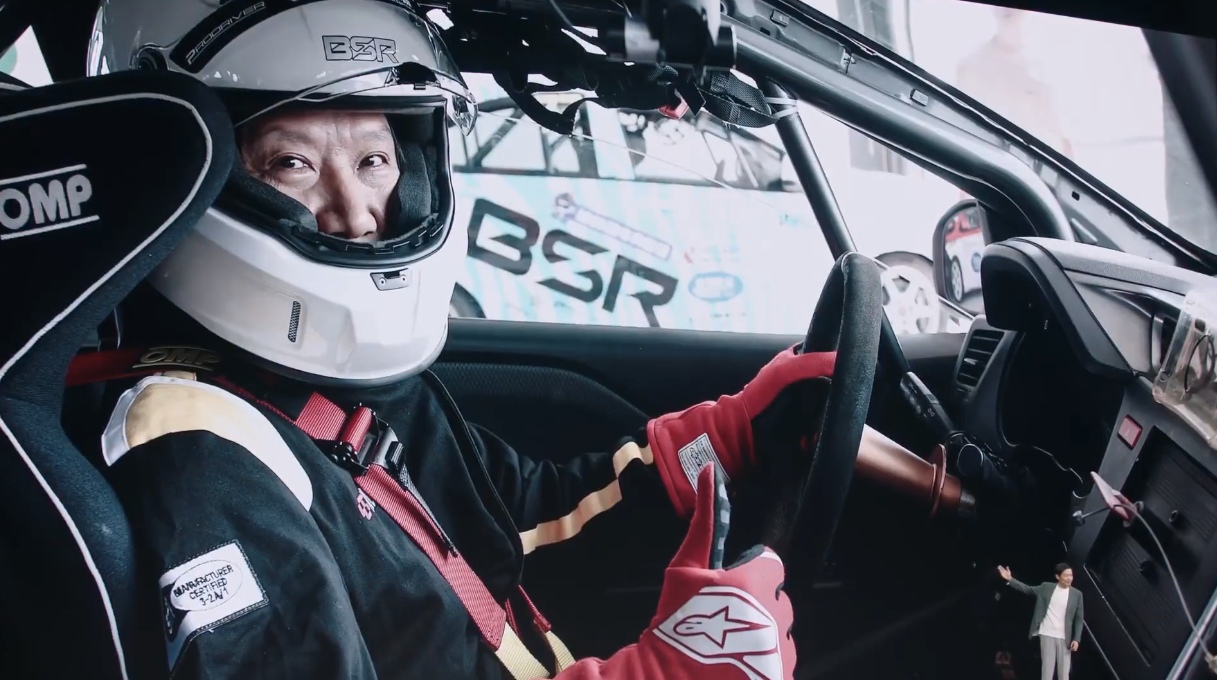
Concurrently, Lei Jun borrowed cars from friends and colleagues and visited various brand 4S stores for test driving, aiming to drive more and understand cars better.
Additionally, Lei Jun would occasionally visit XiaoMi’s underground garage to see which cars haven’t been driven. If a vehicle hasn’t been used, he’d take it for a spin. Moreover, Lei Jun usually inquires from the car owners about their impressions, such as the virtues and faults of their vehicles and their preferences for the next car.
In all respects, Lei Jun acquires knowledge about cars through various channels. According to him, he has test-driven over 170 cars, amassing documents of notes that surpass 200,000 words.
After a long period of learning, Lei Jun has reasonably mastered driving. During his annual speech, he even revealed a video of himself drifting.
Of course, what’s more significant is that Lei Jun applies his knowledge about cars to car manufacturing. He personally took part in the winter and summer testing of the XiaoMi SU7, independently test-driving it for 5,000 km. He also encouraged XiaoMi’s executives to collectively test-drive the XiaoMi SU7 for 100,000 km.
Under Lei Jun’s leadership, XiaoMi managed to produce the XiaoMi SU7 in three years. However, before the XiaoMi SU7 was officially launched, Lei Jun sank into utmost despondency.
Lei Jun stated that before the XiaoMi SU7 was officially launched, XiaoMi approached many individuals for discussion. Many of them asserted that Tesla had a strong fan appeal and car owners prioritizing brand when switching cars. Further, a long report was produced within XiaoMi, indicating that female car owners would typically not prefer performance cars. Lei Jun also consulted multiple media outlets, which generally believed that for pure electric sedans, monthly sales of 3,000 units would be a cause of celebration.
All these signals hinted Lei Jun that the XiaoMi SU7 might not sell well. Nevertheless, he still believed firmly that the XiaoMi SU7 would be a success.
Therefore, when XiaoMi placed orders with suppliers for annual production capacity in February this year, many people believed that a production capacity of 30,000 would suffice. However, Lei Jun decided on 76,000. This means if all 76,000 units of annual production capacity were to be consumed, the XiaoMi SU7 would have to achieve an average monthly delivery of over 10,000 units.
Apart from the production issue, pricing presented a tricky problem. As everyone is aware, the price of the XiaoMi SU7 was a hot topic at the time, with speculations ranging from 99,000 to 149,000, to 199,000.
However, in Lei Jun’s view, rational pricing paves the way to the future. Using a low price is but a temporary relief. Only at the meeting the day before the launch event did Lei Jun settle the price at 215,900. As Lei Jun recalls, one executive stated at the meeting that XiaoMi would accept the sales as they were, regardless of the extent.
The events that followed proved that Lei Jun’s decision was not mistaken. The XiaoMi SU7 became a phenomenally successful product, and XiaoMi Auto successfully entered the market.
In regards to the success of XiaoMi SU7, Lei Jun stated in his annual speech that the triumph of the XiaoMi SU7 is the result of tremendous courage from the over 40,000 members of the XiaoMi Group, not just one person.In his annual speech, Lei Jun once again reaffirmed XiaoMi’s goal to become one of the top 5 car manufacturers globally within 15-20 years. To be in the top 5, XiaoMi Auto needs to have the courage to compete directly with the world’s leading automakers.
Hence, XiaoMi has decided to officially enter the Nurburgring competition in October this year, with its weapon being the XiaoMi SU7 Ultra prototype car that was the highlight of the annual speech.
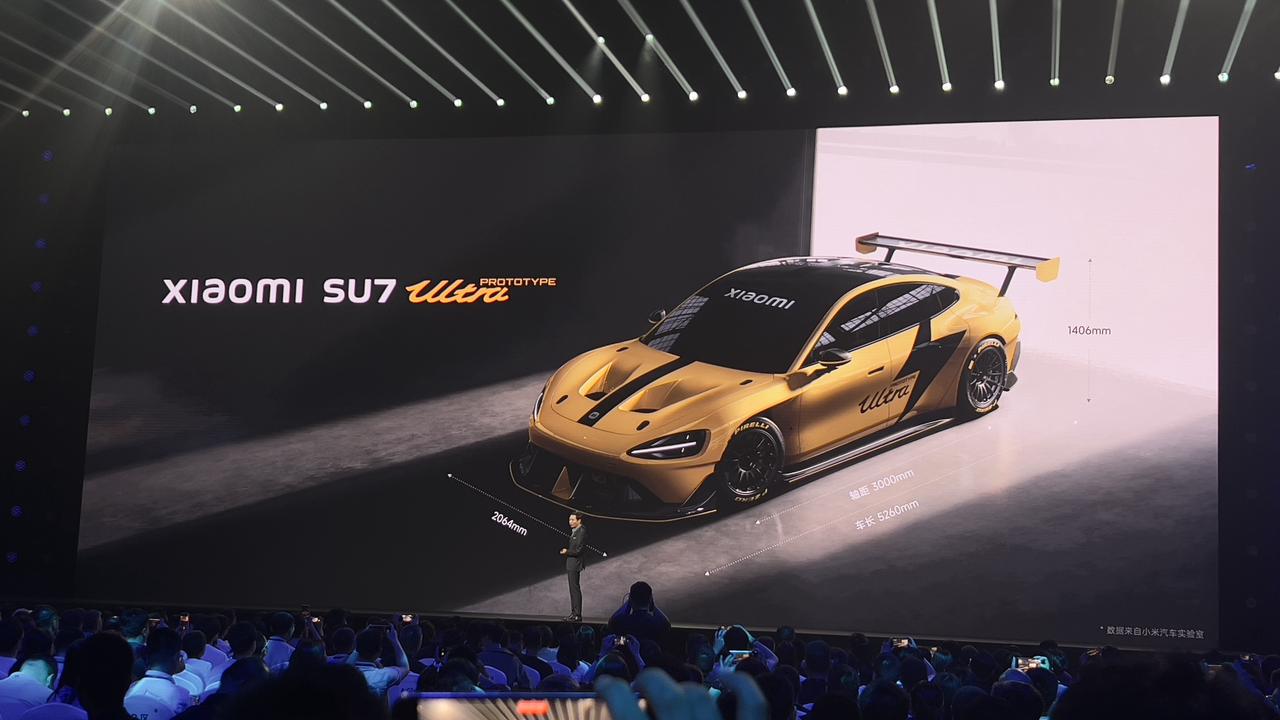
The XiaoMi SU7 Ultra prototype is equipped with two V8s electric motors developed by XiaoMi itself, with a speed of 27,200 rpm, plus a V6s motor. Under the boost of three motors, the XiaoMi SU7 Ultra prototype has 1548 horsepower, can accelerate to 100 km/h in 1.97 seconds, and the maximum speed can exceed 350 km/h.
In addition, the XiaoMi SU7 Ultra prototype adopts a full carbon design, the body covering parts are 100% made of carbon fiber materials, and the total weight of the vehicle is only 1,900 kg.
According to official information, the core hardware and body structure of the XiaoMi SU7 Ultra prototype are independently designed and developed by XiaoMi Auto. The V8s motor is fully independently developed by XiaoMi, and the entire vehicle’s heat management system, electric drive controller, battery control strategy are also independently designed and developed by XiaoMi Auto. The battery pack is a joint development of XiaoMi Auto and CATL.
Interestingly, Lei Jun also said that this car is very expensive, so expensive that even he can’t afford it.
Quick Comments:
The market response and sales performance of the XiaoMi SU7 undoubtedly best answers those who once doubted XiaoMi’s ability to make cars. The success of the XiaoMi SU7 is inseparable from XiaoMi’s profound accumulation in the field of intelligent technology, as well as its accurate grasp of market trends. Facing the sanctions from the United States is a market change, XiaoMi chose self-innovation, rather than passive waiting, this decision-making courage and execution force is worthy of reference for all enterprises.
All-new ZEEKR 009 launched
On July 19th, the all-new ZEEKR 009 was launched.
At the beginning of the press conference, ZEEKR first released a set of sales data about the glorious 009: the order volume in the first 3 months surpassed the original annual production plan; among the users of the glorious 009, the proportion of CEOs of listed companies, senior executives, and public figures reached 75%.
From this point of view, the 009 Glory has indeed achieved very obvious market success.
The new ZEEKR 009 launched this time includes three versions:
- Seven-seater corridor version for 439,000 yuan;
- Seven-seater AWD corridor version for 459,000 yuan;
- Six-seater AWD executive version for 469,000 yuan;
According to official information, the all-new ZEEKR 009 will start delivery from July 22nd.In addition, the new ZEEKR 009 was launched in Hong Kong, and so ZEEKR simultaneously pushed the new ZEEKR 009 to the Hong Kong market. The right-hand drive model starts at 755,000 HKD (currently around 703,000 CNY) and will be delivered in the fourth quarter of this year.
Let’s take a look at the capabilities of the new ZEEKR 009.
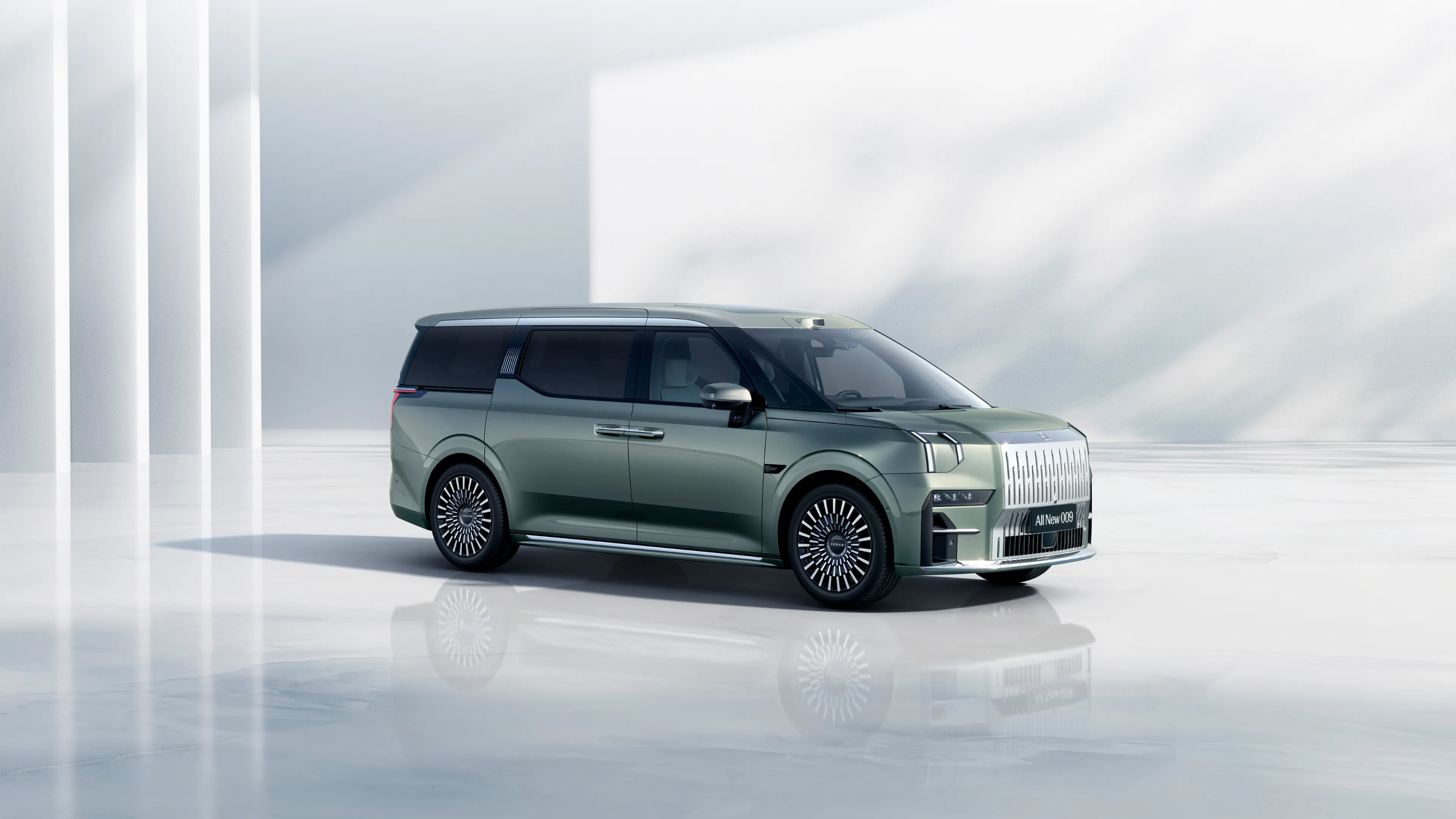
In terms of batteries, the new ZEEKR 009 is divided into 800 V and 400 V versions. The 800 V version is equipped with a 5C Kirin battery with a capacity of 108 kWh, and can reach a maximum charging power of 560 kW. According to official information, it takes 11.5 minutes for the 800 V new ZEEKR 009 to charge from 10% to 80% of the battery, and its longest CLTC range is 740 km. The 400 V version uses a 140 kWh Kirin battery with a maximum CLTC range of 900 km.
In terms of driving control, the new ZEEKR 009 is equipped with a high-performance silicon carbide electric drive system, double-chamber air suspension, a maximum horsepower of 788, the fastest 0-100 km/h acceleration is 3.9 seconds, the 100-0 km/h braking distance is 36.6 m, and the elk test result is 76 km/h.
For comfort features, the new ZEEKR 009 has standard refrigerator color television large sofa. It is equipped with an 8.6 L capacity refrigerator, a temperature range of -6℃ to 50℃, supports constant temperature mode, and UV sterilization; Front and rear rows come standard with dual-layer OLED screens, similar to the iPad Pro, supporting 10.7 billion colors, a contrast ratio of 2,000,000:1, and 87% screen-to-body ratio; The sofa is equipped with Safaro first-class cabin aircraft seats. In addition, in terms of sound system, the new ZEEKR uses a YAMAHA 3D high-end sound system, supports 7.1.9 Dolby Atmos sound, has 9 overhead sound channels, and panoramic sound in all three rows.
In terms of smart driving, the new ZEEKR 009 comes standard with LiDAR, equipped with a high-performance Mobileye EyeQ5H 7 nm chip, 7 long-distance high-definition cameras with 8 million pixels each, a millimeter-wave radar with a perception distance of 250 m, 4 long-distance ultrasonic radars,8 short-distance ultrasonic radars, 4 short-range surround cameras, and 1 in-car monitoring camera.
Quick comment:
The ZEEKR 009 is a key product for ZEEKR in shaping its brand value and height. Since it was officially launched on November 1, 2022, with the push of product power and cost performance, the market welcome of ZEEKR 009 continues to increase. Recently, it was even reported that the fantastic ZEEKR 009 was selling for a premium. However, as An Conghui stated, in response to this situation, ZEEKR immediately held a meeting with the team to strictly prohibit overcharging.This time in Hong Kong, a popular market for MPV, ZEEKR’s introduction of its new ZEEKR 009 is representative not only of its confidence in the product and brand, but also indicative of its expanding market share. As An Conghui mentioned, being a global brand, ZEEKR must go global in its efforts to penetrate various segment markets worldwide. In this sense, the ZEEKR 009 is a leading force in ZEEKR’s global market outreach.
ID. Going Public
On July 17, Volkswagen’s pure electric SUV, the ID., officially hit the market, with prices ranging from 209,900 to 249,900 Yuan across three different models.
The ID. makes a precise entry into the pure electric SUV market and with its unique design, it notably distinguishes itself among other vehicles under the Volkswagen brand.
The vehicle adopts a new coupe SUV sporty design, with dimensions (length, width, and height in mm) of 4,6631,8601,610, and a wheelbase of 2,766 mm.
Aesthetically, the ID. incorporates the latest design language from Volkswagen, catering specifically to the preferences of younger users.
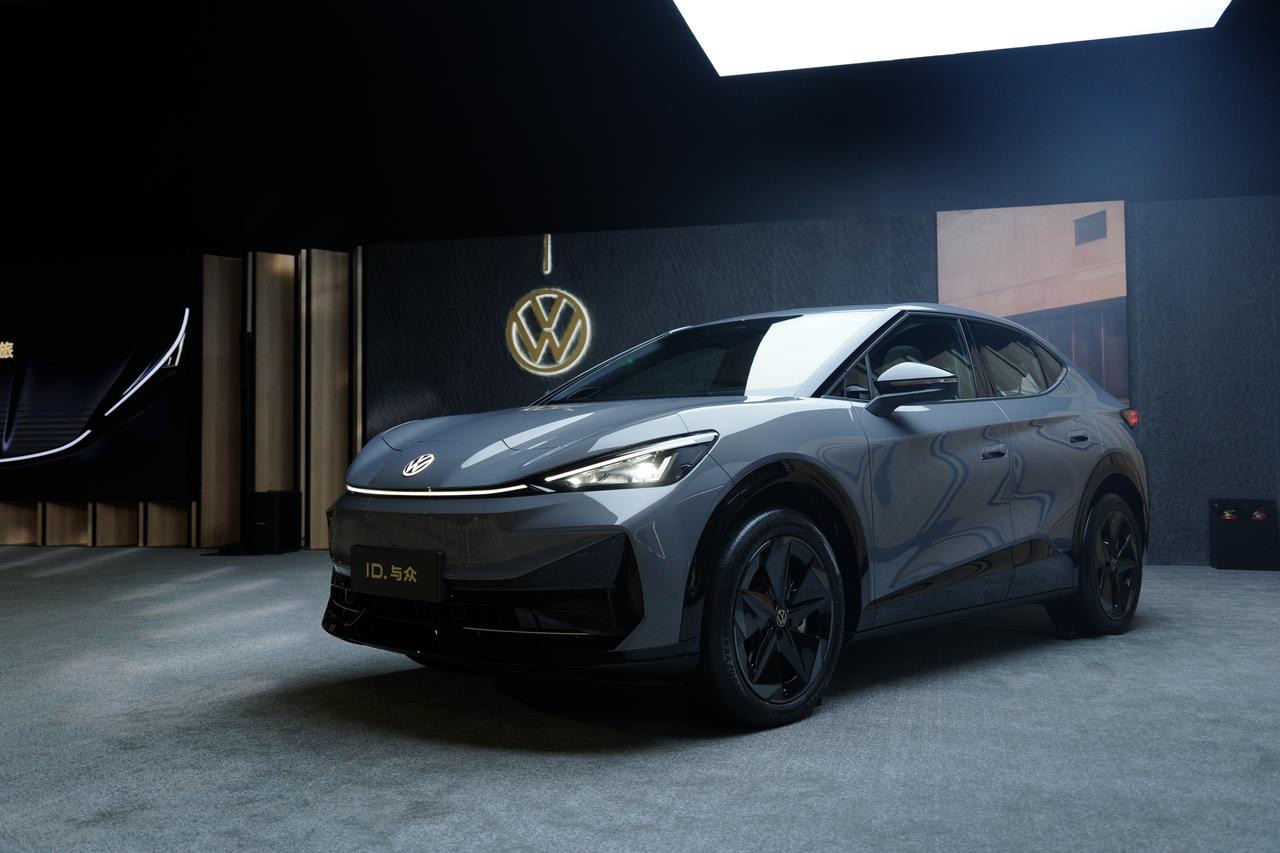
The ID.’s bowed head lends a dynamic touch to its facade, characterized by its innovative low center, high sides light design. Coupled with its muscular hood, it effuses an aura of sportiness.
When viewed from the side, its elegant fastback coupe design and slanted A-pillar along with a ‘floating’ roof imbued with inspiration from the ID. R conceptual ultra-sports car, reflect automotive elegance at its finest. The glossy black A-pillar, connecting the windshield to the side windows, provides a stylish sun visor effect.
The maximum 21-inch low wind resistant wheel hub further enhances the visual appeal of the ID. Clearly, bigger is more attractive.
What makes ID. even more alluring are two specific details – one is the distinctive golden Volkswagen emblem and gold embellishments throughout the car, and the second is the IQ. Light intelligent matrix LED headlights.
The ID. is the first model to sport the golden Volkswagen emblem, employed exclusively in parts of the logo, wheel hub center, and on the headlights. The light fixtures inside the car and body trim also feature gold embellishments, a unique aspect among Volkswagen models worldwide.
Referencing the headlights, the IQ. Light intelligent matrix LED headlights exude an air of confidence, particularly high in recognisability, which has received rave reviews from users of other ID. family models.
Upon entering the ID., the familiar interior echoes with the signature design language of the ID. family.
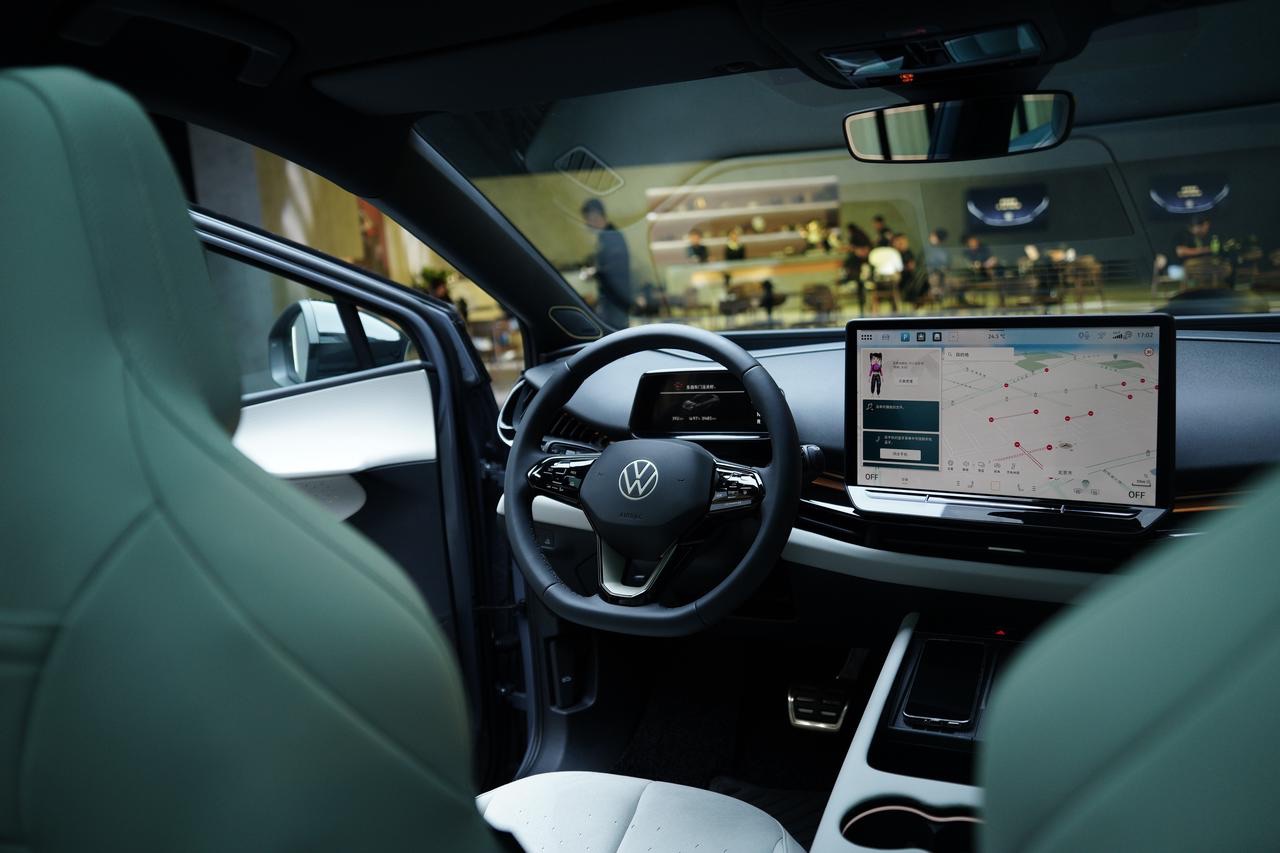 A 5.3-inch instrument panel, the largest 15-inch 2K central control screen in the ID. family, and a 70-inch AR HUD all give this car impressive technological characteristics. The built-in system varies from the older models, with the ID. uniquely equipped with the ID.S 5.0 in-vehicle system powered by the UNYX.OS operating system.
A 5.3-inch instrument panel, the largest 15-inch 2K central control screen in the ID. family, and a 70-inch AR HUD all give this car impressive technological characteristics. The built-in system varies from the older models, with the ID. uniquely equipped with the ID.S 5.0 in-vehicle system powered by the UNYX.OS operating system.
Compared to the ID.3 and ID.4 models already available, the central control screen on the ID. is clearly larger, identical to that of the ID.7 model. This larger screen offers a completely different impression at first glance. But what about the user experience?
Previously, we were able to get a hands-on experience with this in-car system. It left a strong impression on us, especially with its AI intelligent companion. By customizing the facial expressions, apparel, and actions of the AI companion, users can carry out more realistic conversations with the system. It can even clone human voices, making AI appear more human-like.
Volkswagen and iFlytek have also collaborated on a new generation of cognitive intelligence language models. More advanced AI technology and natural language understanding make “Hello Volkswagen” more than a tool for opening windows or playing music; it can answer more complex questions.
In addition, the in-vehicle app store has third-party apps available to download. It also features over 50 in-vehicle mini programs like Youku Video and Local Life Services that can be used directly without downloading. In essence, the application ecosystem essentially covers all in-vehicle scenarios.
These aspects are specifically upgraded from the ID.4 model in terms of intelligent ride features, and show clear improvements in functionality after upgrading to UNYX.OS.
In terms of in-vehicle connectivity, the ID. supports wireless CarPlay, CarLife and also wired connection to Huawei’s HiCar. In other words, the ID. supports almost all mainstream mobile phone in-vehicle interconnectivities. Navigation and music, two core functions, become simple to operate.
If you prefer a simple in-car system without the intricacies, or if you are already a deep user of systems like CarPlay or HiCar, I am convinced that the in-car system of ID. will certainly meet your daily requirements.
On the other side of intelligence is autonomous driving. The ID. comes standard with an L2+ level assisted driving system and active safety functions. Officially they are called Travel Assist 3.0 for the full journey driving assist system and Emergency Assist 3.0 as the emergency assist system.
Travel Assist 3.0 provides L2+ level assisted driving capabilities. Once activated, the car controls the distance to the car in front while maintaining its course along the current lane. After the driver activates the turn signal, the car will evaluate the surrounding environment and aid the driver in lane changes.
The Emergency Assist 3.0 emergency assist system is comprised of 3 lateral active safety features, 5 forward active safety features, and one rearward active safety feature. Together, these make up the 9 comprehensive driving assist functions.Looking at the current market for A-Class electric SUVs, most models tend to have a cheaper “entry level model”, which usually means fewer features. The active safety and driving assistance features are typically the first to be discarded due to their high hardware costs.
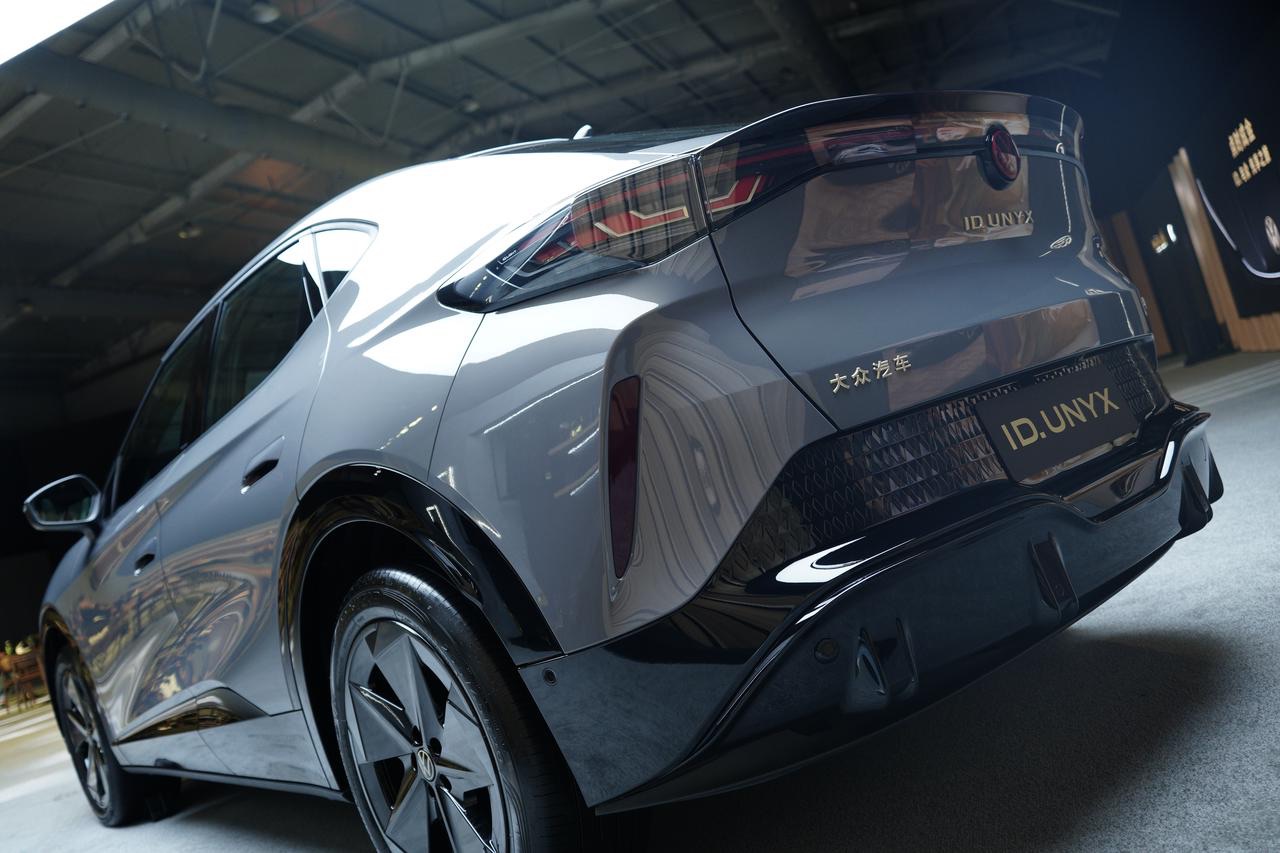
It’s not hard to see that the entry level A-Class electric SUV models usually come with adaptive cruise control (ACC), or are equipped with outdated cruise control technology.
However, the ID. model does not follow this norm. It comes with standard Travel Assist 3.0 full journey driving assistance system and Emergency Assist 3.0 emergency assistance system.
Additionally, there is an optional automatic parking feature, which, through 12 ultrasonic radars and a Top View 360° panoramic camera, allows the ID. model to carry out functions such as reverse parking and side position parking.
All these intelligent features are backed by Volkswagen’s MEB electric platform. This platform also allows the ID. model to excel in terms of battery, range, and car control.
The ID. model is equipped with an 82.4 kWh battery pack. The rear drive version can reach a CLTC condition 621 km range, and there’s also a dual motor four-wheel drive version, with a combined output power of 250 kW, maximum torque 472 N・m, and quickest acceleration from 0 to 100 km/h in 5.6 s.
In the domestic A-Class electric SUV market, such performance and range are excellent.
The ID. model is equipped with Volkswagen’s latest high-performance chassis system, including a DCC adaptive chassis tuning system and an MEB dual-stage compliance vibration isolation system. This system uses real-time road condition information received from sensors to dynamically adjust suspension damping, thus improving the driving and handling experience in both comfort and sport mode.
Furthermore, the ID. model has a 50:50 front-to-rear weight distribution, along with a front 235 mm and rear 255 mm asymmetric mixed tyre width, all of which improves the overall handling of the vehicle.
One of the most significant advantages of the already launched ID. family models is their particularly small turning radius, a feature that is noticeable from the first drive. Especially in scenarios where a U-turn needs to be made in narrow junctions, whereas other models may need to move back and forth, the ID. models make it through in one go. Thanks to the MEB platform, the ID. model has a small turning radius, with a minimum turning radius of 4.7 meters.
For the rear-drive model, the steering angles for the front wheels are 48.83° and 40.17° respectively. Achieving flexible steering through an increased tyre swing angle is uncommon for vehicles in this price range.
Thanks to the MEB electric platform, the ID. model performs excellently in terms of battery, range, car control, and intelligence. Even in 2024, it will still be an outstanding A-Class electric SUV.
Quick Review:
In 2024, automakers feel the Chinese car market is exceedingly competitive, while consumers enjoy the emergence of cost-effective models. It’s not just domestic brands; numerous joint-venture brands are releasing stronger models with lower prices to maintain their market share.
Thus, the entire new energy vehicle market is becoming exceptionally active.
Within China’s crowded joint-venture market, Volkswagen is one of the most proactive automakers in energy transition. With its continuous expansion of models using ID. and more to meet diverse consumer needs, the transformation to intelligent networked electric vehicles is accelerating.
This article is a translation by AI of a Chinese report from 42HOW. If you have any questions about it, please email bd@42how.com.
